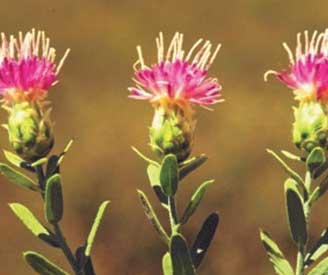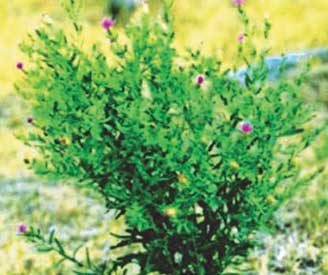Russian Knapweed
Acroptilon repens
(also known as: Centaurea repens, Rhaponticum repens)
Description
Plants up to 3 ft., stems branched at base, striate, covered with downy-white hairs. Leaves of new shoots alternate, broadly lanceolate, toothed, somewhat whitish underneath. Flowers numerous, tubular, rose to purple or blue, on the ends of leafy branches. Flowers, June – August.
Habitat
Grows on clay, sandy or rocky prairies; on saline soils; or clay, rocky or sandy shores of lakes and rivers. Also thrives in pastures, crops, roadsides, waste places and rangeland.
Location in Nebraska
Found in a few counties of Eastern and Western Nebraska.
Pathway of Introduction and Spread
Introduced from Asia. Reproducing by roots, rhizomes and seeds. Roots from a recently established plant expand rapidly and may cover up to 12 square yards in two growing seasons.
Impacts
Forms dense, single species stands over time due to competition and allelopathy; is toxic to horses.

